Product Overview
The 19-day overland Egypt tour package will shed light on the historical, biblical, natural, and tropical marvels of this celestial travel destination. Landious Travel will shed light on the miraculous heritage of the ancient Egyptian civilization across the golden cities of Giza, Cairo, Fayoum, Aswan, Luxor, Hurghada, and Sinai.
Our highly skilled and professional team of Egyptologists tour guides, tour operators, travel and time advisors, drivers, and customer support specialists will deliver to our clients the most entertaining travel adventure of a lifetime. Our guests will be totally satisfied with all our excellent services which include the most fitting accommodations, transportation, restaurants, and many more.
On this magical 19-day overland Egypt tour package, everyone will tour all the beautiful attractions of Cairo which include the Great Pyramid of Giza, the Sphinx, the Grand Egyptian Museum, the National Egyptian Museum, the Cairo Citadel, and Khan El Khalili Bazaar.
The mythical cities of Luxor and Aswan will reveal the greatness of Aswan High Dam, Philae Temple, the Unfinished Obelisk, Karnak Temple Complex, Luxor Temple by Night, Valley of the Kings, Hatshepsut Temple, Colossi of Memnon, Valley of the Queens, Habu Temple, Deir El Medina, Abu Simbel Temples, Nubian Village, Kitchener Island, Elephantine Island, and more.
The heavenly and very mesmerizing Hurghada city resort will offer a magical chance to enjoy the most majestic snorkelling trip in the Red Sea and a Super safari trip through the mythical Sahara of eastern Egypt.
You will climb the tallest spots in Egypt leading to the blessed Saint Catherine monastery where biblical history took its first steps. Live the travel experience of your dreams and book this one-of-a-kind trip.
What's Included
- 5-night accommodation in Cairo
- 3-night accommodation in Luxor
- 3-night accommodation in Aswan
- 5-night accommodation in Hurghada
- 1-night accommodation in Saint Catherine
- 1-night camping in Fayoum
- Flight tickets Cairo/Aswan - Hurghada/Cairo
- Meet and assist service at the airport
- Meals are included as per the tour itinerary
- First-class train ticket (Aswan/Luxor)
- All transfers are in a modern A.C vehicle
- Entrance fees to all the sites in the itinerary
- An expert Egyptologist tour guide
- All service charges and taxes
What's not Included
- International airfare
- Egypt entry visa
- Gratuities
What to Expect
Meet & Assist Servive in Cairo International Airport

- As you start the vacation of a lifetime, your journey commences upon arrival at Cairo airport. Upon disembarking, a courteous representative from Landious Travel will help you through passport control procedures and ensure your luggage is safely identified and cared for. Afterwards, you'll be chauffeured to your hotel in a private, air-conditioned car for a seamless and comfortable check-in process.
Dinner on a Nile Cruise in Cairo

- As the sun sets over the horizon, you will embark on a captivating dinner cruise along the historic Nile River. On this enchanting journey, you can unwind and take in the mesmerizing sights while entertained by a vibrant belly dancing performance accompanied by a folklore band. Additionally, you will experience the awe-inspiring Tannoura dance, a majestic display inspired by Egypt's rich whirling dervishes tradition. This is an evening you won't soon forget.
- After a day of exploration, you will return to your hotel for a restful overnight stay.
Tour to Giza Pyramids
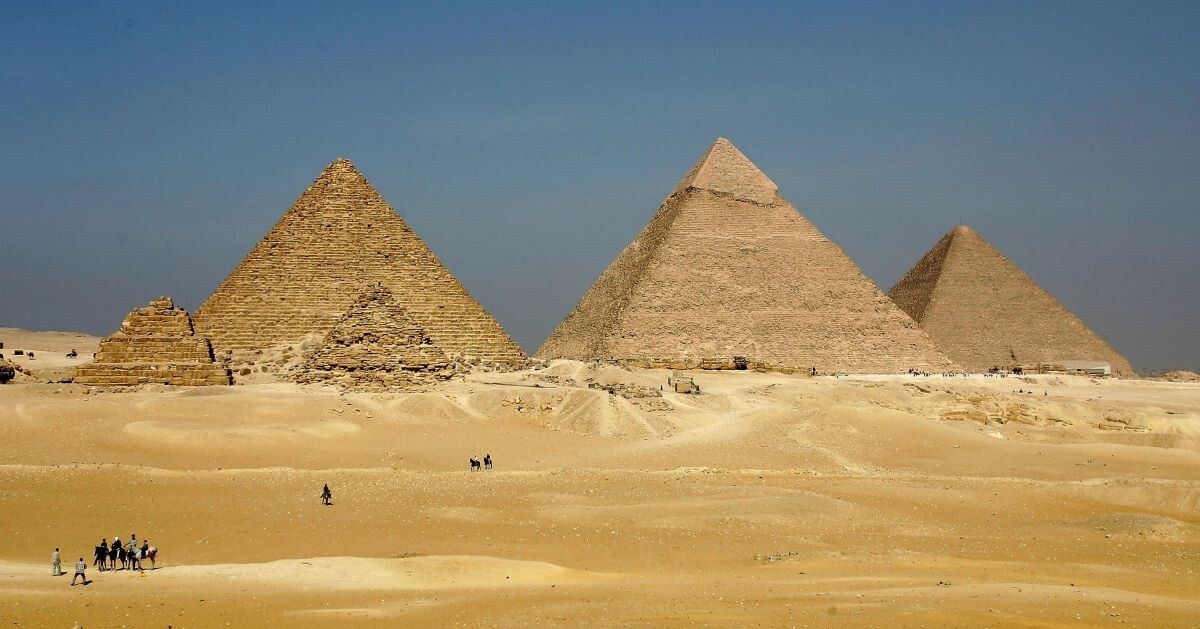
- On the second day of your 19-day Cairo holiday package, prepare for an unforgettable experience as you embark on a tour of the Egyptian Pyramids. Begin your day with a delightful breakfast before joining your private tour guide. You'll have the opportunity to explore the great monument of the ancient Egyptian Civilization, which stands as the last intact wonder of the Seven Wonders of the Ancient World. Get ready to immerse yourself in the history and grandeur of these iconic structures.
- The Giza Pyramids Complex, located on the Giza Plateau, has a rich history dating back over 4000 years. This historic site consists of three main pyramids, six smaller pyramids, the iconic Great Sphinx, and the Valley Temple. These awe-inspiring structures were built to facilitate the ascension to the heavens, as the ancient Egyptians believed in connecting with their gods and preserving their legacy for eternity.
- The Great Pyramid, an architectural marvel of ancient Egypt, is one of recorded history's most enduring and monumental structures. Commissioned by King Khufu and completed around 2580 BC, this edifice predates modern civilisation by over 4500 years. Crafted from an astounding 2,300,000 pieces of limestone, this colossal monument rises to a staggering height of 147 meters (481 feet), reigning as the world's tallest structure for an astonishing 3800 years until the construction of the Lincoln Cathedral in 1311. Its awe-inspiring stature and mysterious interior have captivated the human imagination, giving rise to intriguing and enigmatic theories surrounding its construction and purpose.
- The Great Sphinx, standing at a towering height of 73 meters (240 feet) and a length of 19 meters (66 feet), is a captivating and enigmatic statue. This ancient wonder takes the form of a mythical being known as the Sphinx, featuring the body of a majestic lion and the head of a wise and powerful man, believed to represent King Khafre. The Great Sphinx has served as a profound wellspring of fascination and inspiration for countless wanderers, writers, and voyagers throughout history, and its allure persists today amidst the lingering veil of mystery cloaking its existence.
- The Valley Temple is a remarkable site where the ancient and fascinating mummification process occurred during the Old Kingdom of Egypt. This well-preserved structure, constructed entirely from limestone and granite, is a testament to the ancient Egyptian civilisation's advanced architectural and engineering skills. The temple also boasts stunning diorite statues of Chephren, adding an extra layer of magnificence to this historical site.
Tour to the Grand Egyptian Museum
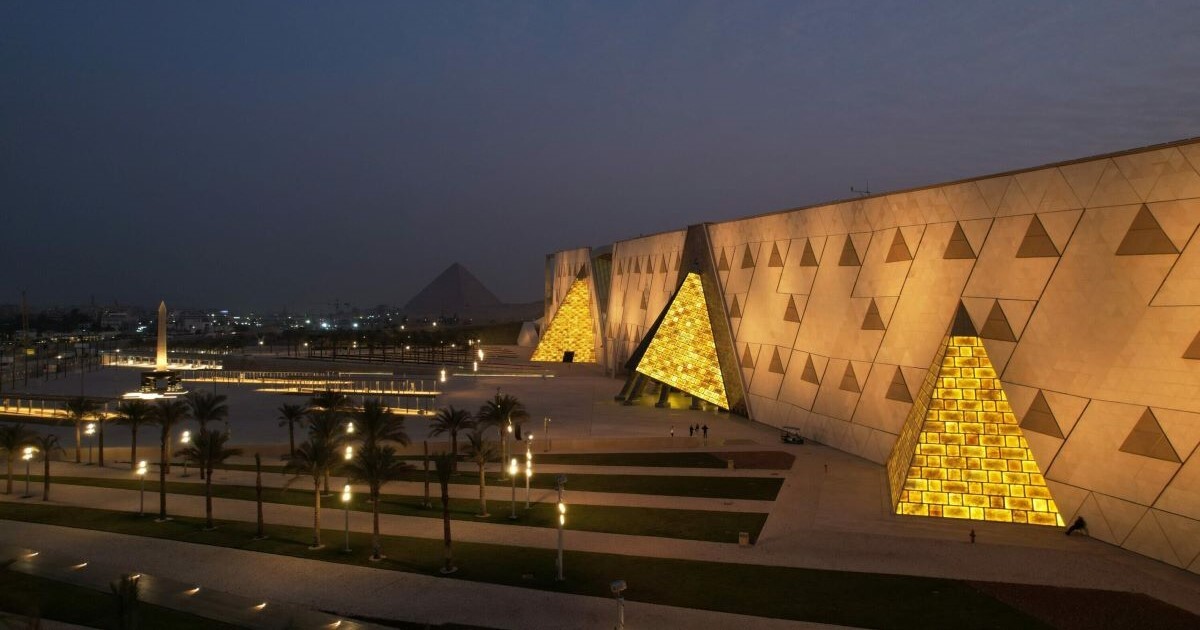
- Behold the magnificent Grand Egyptian Museum, a dazzling gateway to the wondrous world of ancient Egypt. This awe-inspiring monument houses an unrivalled collection of celestial creations, meticulously crafted over 5000 years of continuous innovation and boundless artistic vision. Within this monumental treasure trove, visitors are granted a unique opportunity to uncover some of the most extraordinary archaeological marvels and artefacts ever unearthed, including the awe-inspiring Hanging Obelisk, the majestic King Ramses II Statue, the illustrious 10 Statues of King Senusert, the awe-inspiring Grand Staircase, the captivating Statues of Ptolemaic Kings and Queens, the iconic Victory Column of King Mercnptah, the epic Royal Regalia, and the breathtaking Grand Atrium and Gift Show. For those seeking an even more immersive experience, a VIP ticket grants access to a myriad of other equally astounding artefacts. It's time to take a break and enjoy a delicious meal at a charming local restaurant in the bustling city of Cairo.
Tour to Saqqara Necropolis
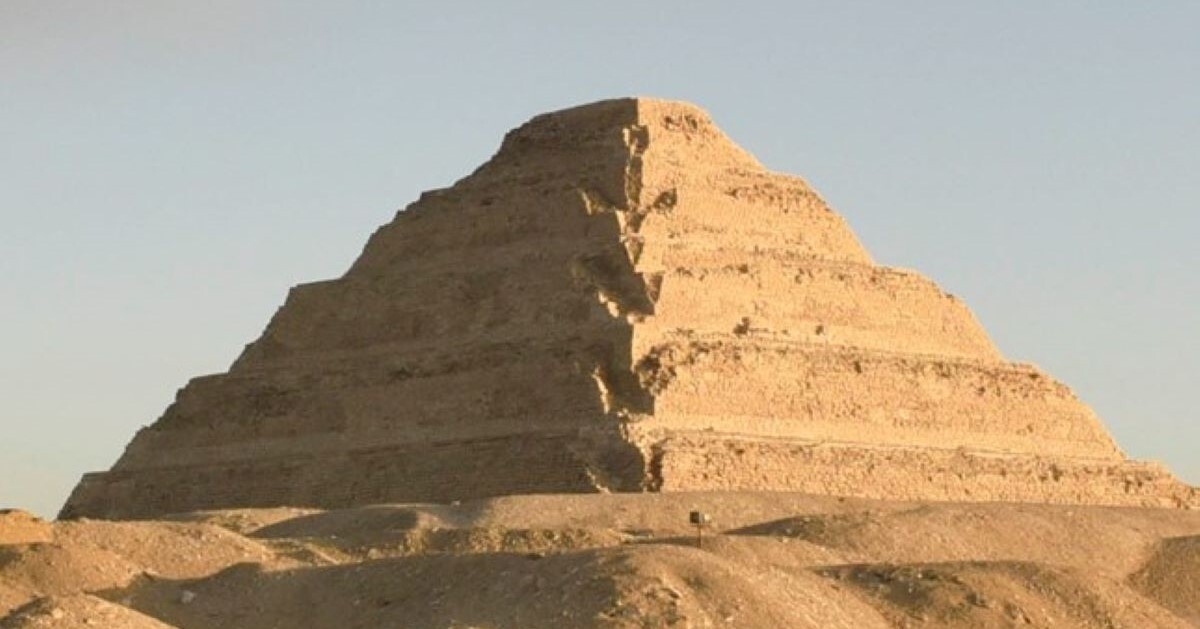
- Continue your gastronomic journey with a delightful lunch at a charming local eatery in Cairo. Following this, proceed to explore the awe-inspiring Saqqara Step Pyramid. This remarkable architectural marvel stands as the very first pyramid ever constructed and marked the inception of a magnificent era in construction. Crafted under the masterful guidance of Imhotep, the vizier of Pharaoh Djoser, this pyramid boasts a distinctive six-step design and reaches a towering height of 62 meters. Surrounding the pyramid is a complex adorned with stunning embellishments and grand ceremonial edifices, a pioneering feat in its time.
Tour to Memphis
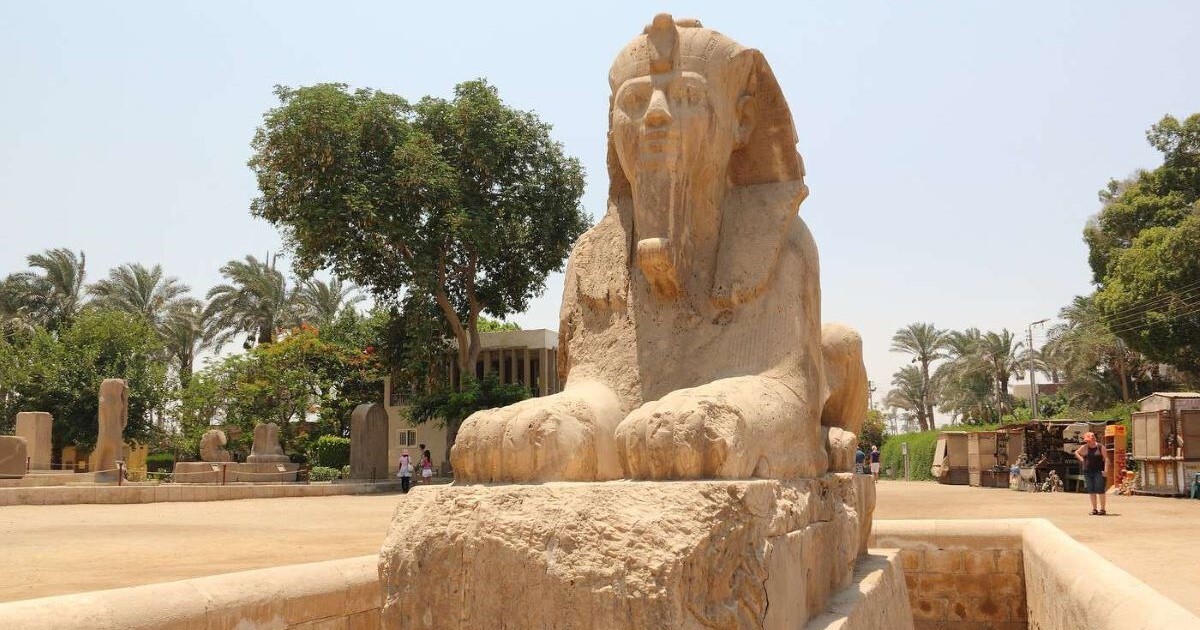
- Memphis City, the first official capital of Egypt, was founded by King Menes and intended to be the thriving heart of the "two lands." This historic city is renowned for its endurance and beauty and is home to the god Ptah, the patron of creation and artwork. Memphis is rich in ancient ruins dating back over 4000 years, including monumental structures associated with prominent figures of Ancient Egypt, such as Ramses II. The city also houses temples dedicated to revered deities like Aton and Hathor.
- Afterwrds, we will escort you to your hotel.
Tour to Qarun Lake

- On the third day, you will have your breakfast and then head to the oasis city of Fayoum, known for its picturesque landscapes and ancient history.
- You will explore the Qarun Lake which is a serene natural oasis teeming with birdlife known to be the third-largest lake in Egypt. The city of Fayoum itself has a charming atmosphere with its traditional markets, local crafts, and ancient ruins. The region is also home to several archaeological sites, such as the Pyramid of Hawara and the Meidum Pyramid.
Tour to Wadi El-Rayan Waterfalls

- You will visit the heavenly Wadi El-Rayan which is a captivating desert area featuring stunning waterfalls and unique rock formations. It is characterised by two beautiful lakes, known as the Upper Lake and the Lower Lake rise from the golden deserts of this captivating desert area featuring stunning waterfalls and unique rock formations. It is characterized by two beautiful lakes, known as the Upper Lake and the Lower Lake that rise from the golden deserts of this celestial spot.
- The magical natural Waterfalls of Fayoum are blessed with beautiful waterfalls, and one of the most famous is the Wadi El-Rayan Waterfalls which are formed by natural springs and offer a refreshing escape from the desert surroundings. The area features two man-made lakes connected by a series of waterfalls. These waterfalls cascade down rocky cliffs, creating a tranquil and mesmerizing sight. Everyone will get to swim in crystal-clear waters and bask in the natural beauty of this heavenly area.
- Enjoy a delightful lunch at a restaurant where you can relish delicious dishes amidst magnificent surroundings.
Tour to Wadi El-Hitan
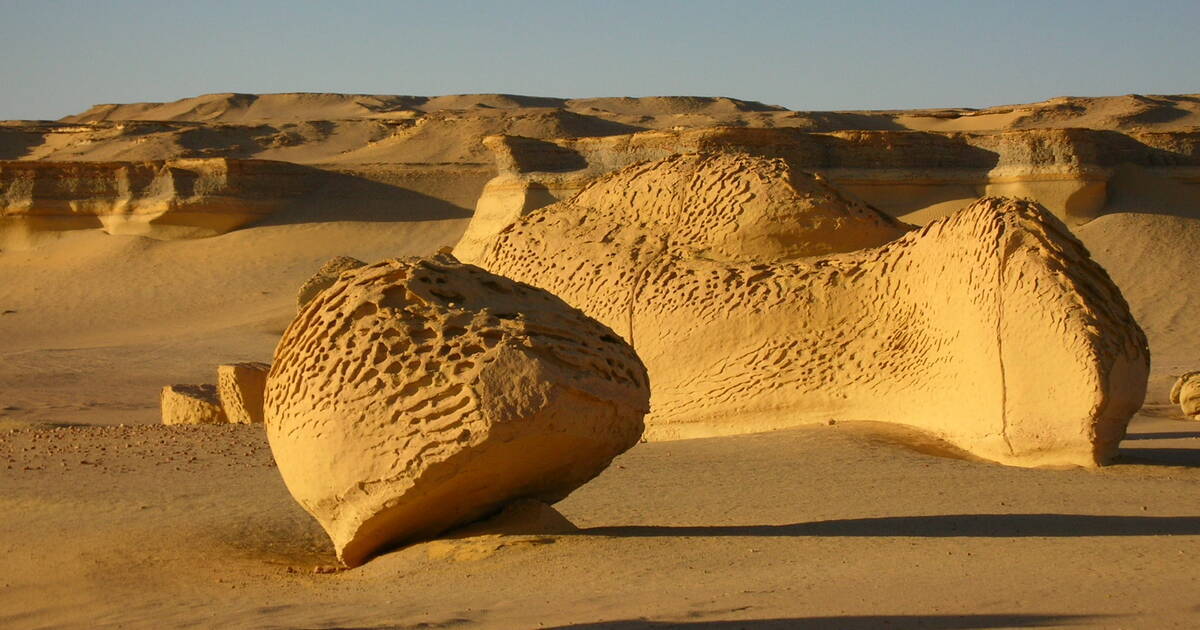
- Wadi El-Rayan is a heavenly and beautiful protected area renowned for its two interconnected man-made lakes, created as a result of agricultural drainage. The Egyptian lakes are surrounded by stunning desert landscapes and are known for providing a surreal contrast that will make every moment feel like magic. Wadi Rayan is also home to various bird species and wildlife, making it an ideal spot for nature lovers and photographers.
- As dusk descends, settle into a magical camping experience in the heart of Fayoum, where you'll enjoy traditional Bedouin lunch cuisine under a canopy of stars.
- On the second day in Faiyum, you will have your breakfast, then visit Wadi El Hitan.
- You will dive into the heart of the magical Wadi Al Hitan, also known as the Valley of the Whales which is a UNESCO World Heritage site that is filled with several fossilized remains of ancient whales that can shed light on the remarkable evolution of these majestic creatures. Wadi Hitan is famous for its epic fossil remains of ancient whales and other marine life that lived around 40-50 million years ago during the Eocene epoch. The site provides a unique window into the evolution of whales and the transition from land-dwelling to marine creatures.
- Finally, we escort you to your hotel in Cairo, where you will spend the night.
Tour to the High Dam in Aswan
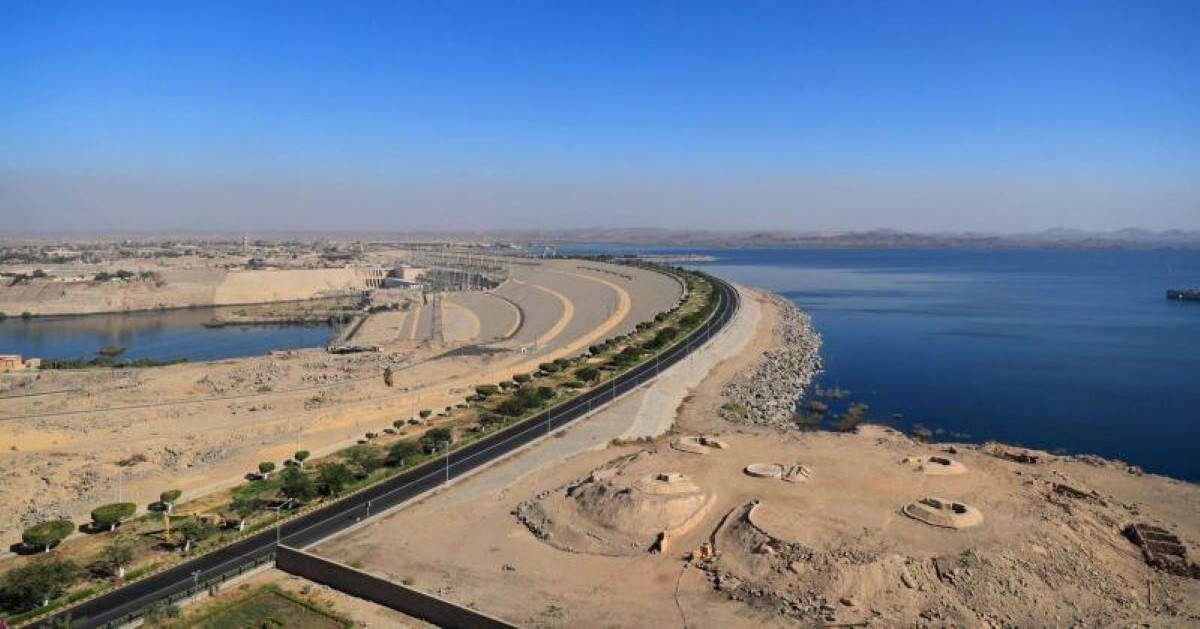
- On your fifth day, wake up to the gentle morning light and savour a delightful breakfast that will energize you for the day ahead. Check out and prepare to head to Cairo Airport to catch the flight to Aswan.
- After arrival your knowledgeable guide as you immerse yourself in the enchanting ambience of this picturesque city.
- Your exploration will include visits to iconic landmarks such as the awe-inspiring High Dam.
- The High Dam stands as a testament to the modern engineering prowess of the city of Aswan. Constructed between 1960 and 1970 during the presidency of Gamal Abdel Nasser, this monumental structure was a collaborative effort with the Moscow-based Hydro Project Institute. Its purpose was to gain better control over the Nile's annual flooding, harness hydroelectric power, and significantly increase water storage for agricultural irrigation in the vast reservoir, Lake Nasser.
Tour to the Unfinished Obelisk

- The Unfinished Obelisk is a remarkable tale of ambitious construction that regrettably never reached its completion. Commissioned by Queen Hatshepsut (1508-1458 BC) to adorn the entrance of the Karnak temple, it bore the name "Tekhenu," signifying "to pierce the sky." This monumental structure provides insight into ancient Egypt's meticulous process of crafting obelisks. Astonishingly, it was intended to reach a towering height of 42 meters and weighed a staggering 1200 tons
- Tragically, the obelisk suffered a significant crack during its construction, which forced it to remain unfinished at its original site until today.
Tour to Philae Temple
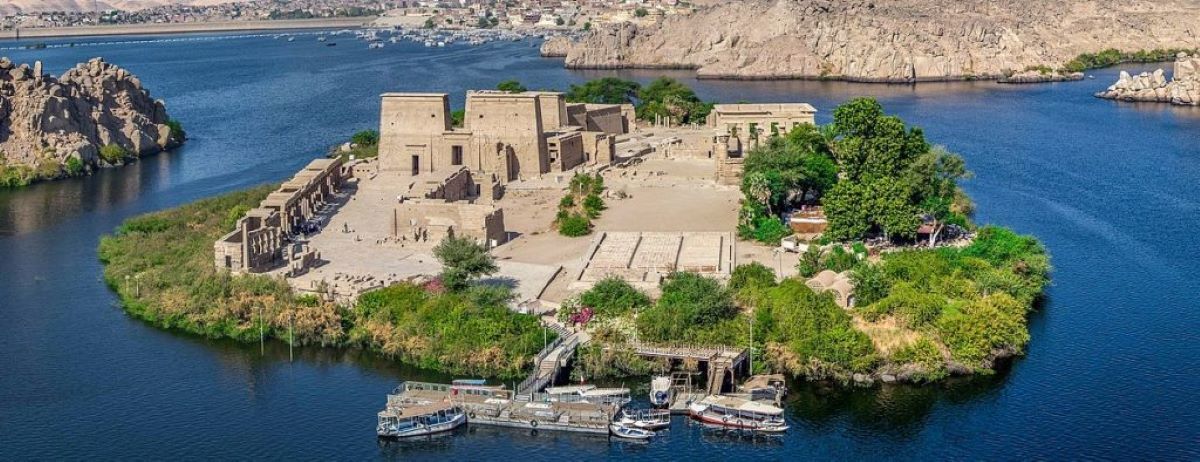
- You will savour a delicious meal at a charming local restaurant in Aswan during lunchtime. Following this delightful experience, you'll embark on a fascinating journey to visit the Philae Temple. Nestled in the heart of Aswan, Philae Temple is steeped in myth, allure, and charm. One of its most famous legends is the "Myth of Osiris," which tells the story of Osiris, the husband of Isis, who his brother murdered Set out of pure envy and hatred. However, Osiris is later resurrected to become the ruler of the underworld. Set is eventually defeated by Isis and Osiris' son, Horus, the sky god, marking the end of an era of injustice and tyranny. In the 1960s, the temple was relocated to the island of Agilkia as part of a UNESCO-led rescue mission following the construction of the Aswan High Dam.
- After a day of exploring Aswan, you will be transferred to your hotel for a peaceful and relaxing evening in this beautiful city by the Nile.
Tour to the Two Temples of Abu Simbel
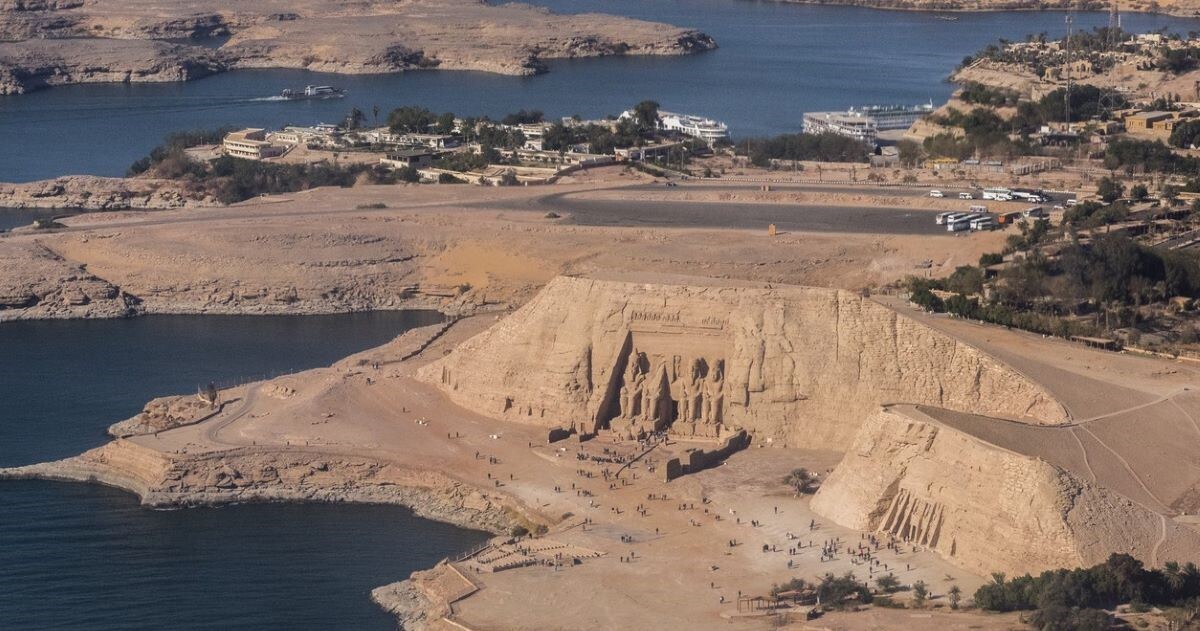
- On the second day of your itinerary in Aswan, prepare for an incredible adventure as you tour the majestic Two Temples of Abu Simbel. To start your day, you will check out of your hotel in the morning and be whisked to Abu Simbel in a private, air-conditioned car. Don't worry about breakfast - you'll be provided with delicious breakfast boxes for the journey. Your knowledgeable private tour guide will accompany you on this unforgettable trip.
- The impressive Abu Simbel temple, constructed by King Ramses II between 1264 BC and 1244 BC, is a remarkable masterpiece withstood time. This golden temple, also known as the Temple of Ramesses, beloved by Amun, is a testament to the grandeur and wonder of ancient Egyptian architecture. It was built to commemorate King Ramses II's victory in the Kadesh battle, honour his beloved wife Nefertari, and pay homage to the deities Amun-Ra, Ra-Horakhty, and Ptah. The temple's grandeur and the rich history it embodies make it a truly awe-inspiring sight.
- After exploring the sights in Abu Simbel, we'll travel back in the comfort of an air-conditioned vehicle. Then, we'll have a delicious lunch at a charming local restaurant.
- Finally, we will escort you back to your hotel.
- On the second day, you will start the day with a delicious breakfast and prepare for a tour to Aswan islands.
Tour to the Island of Elephantine
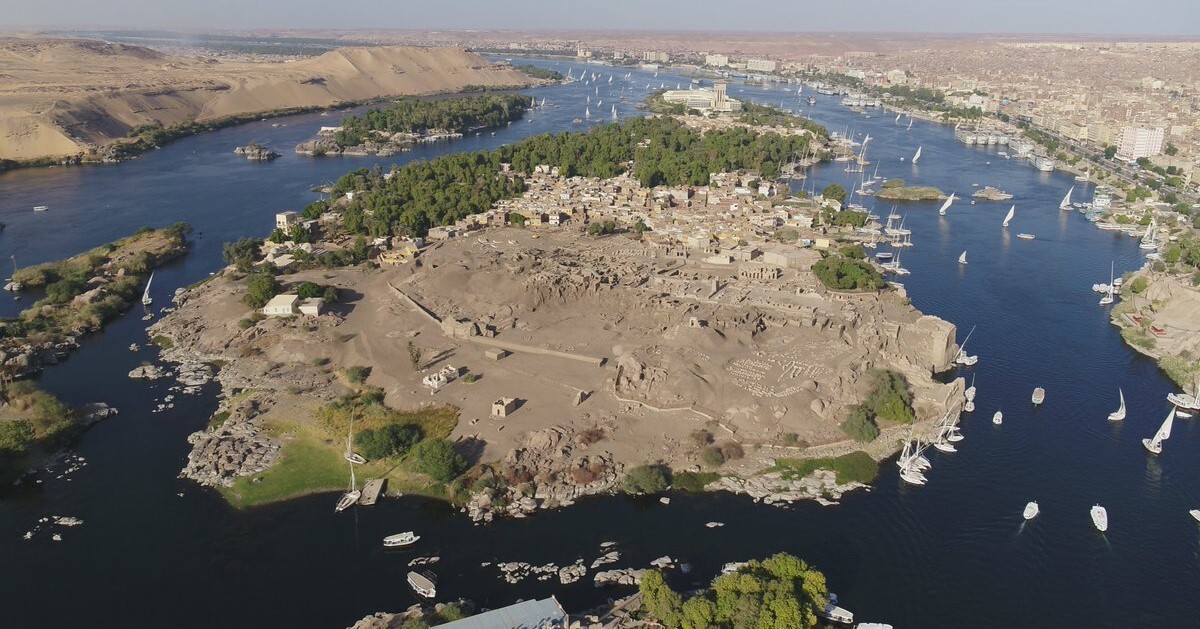
- The island of Elephantine is one of the major Aswan attractions floating on the Nile. The island is 12000 meters situated in the center of the Nile. It had an important strategic position of protecting the southern borders of Ancient Egypt, and during the 6th dynasty which meant more than 3000 B.C., ancient Egyptian kings constructed a fortress on the island. In addition, it was the cult centre of the god Khnum and the dwelling of his temple.
- The island is full of archaeological sites and ancient monumental ruins ready to be discovered. The German team of the archaeological institutes has already shed light on some of the ancient surviving structures during some excavations. The Granite gateway of a temple built by Alexander the Great was found intact but the rest of the ruins were hard to identify during the excavations expedition. Also, two columns built by King Ramses the Second were found.
Tour to the Nubian Village

- Afterwards, tour the Nubian village and meet representatives of the Nubian tribe for a unique cultural experience that offers insight into the rich heritage and traditions of the Nubian people. During a visit to a Nubian village in Aswan, travellers can interact with locals, learn about Nubian customs and folklore, and gain insights into the local way of life. It's a chance to step away from the bustling tourist areas and discover the authentic charm of the Nubian people.
- Next, you will enjoy a delicious lunch.
Tour to Aswan Botanical Island
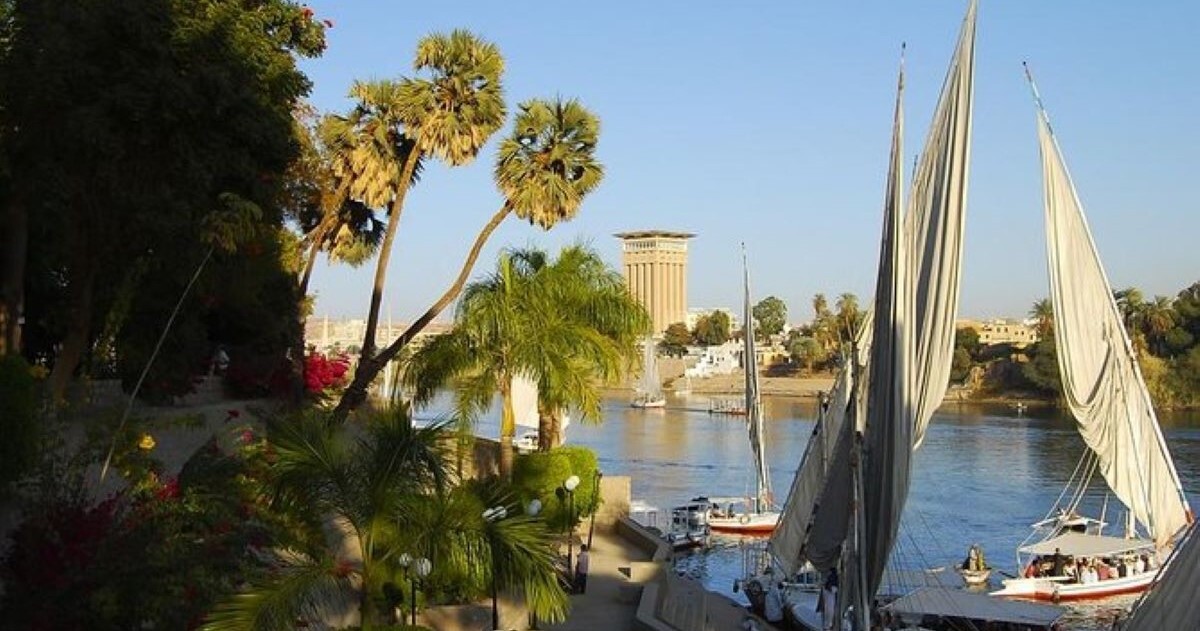
- Afterwards, you will visit Aswan Botanical Island.
- El Nabatat Island or Kitchener’s Island was presented to Lord Kitchener in the 1890s as a reward for leading the Egyptian army's successful campaigns in Sudan. He made the island his home. He filled it with exotic flowers and rare plants from India and Malaysia. This delightful island is less than 1 kilometre long and ½ kilometre wide.
- Finally, we will escort you back to your hotel in Aswan.
Tour to Karnak Temple
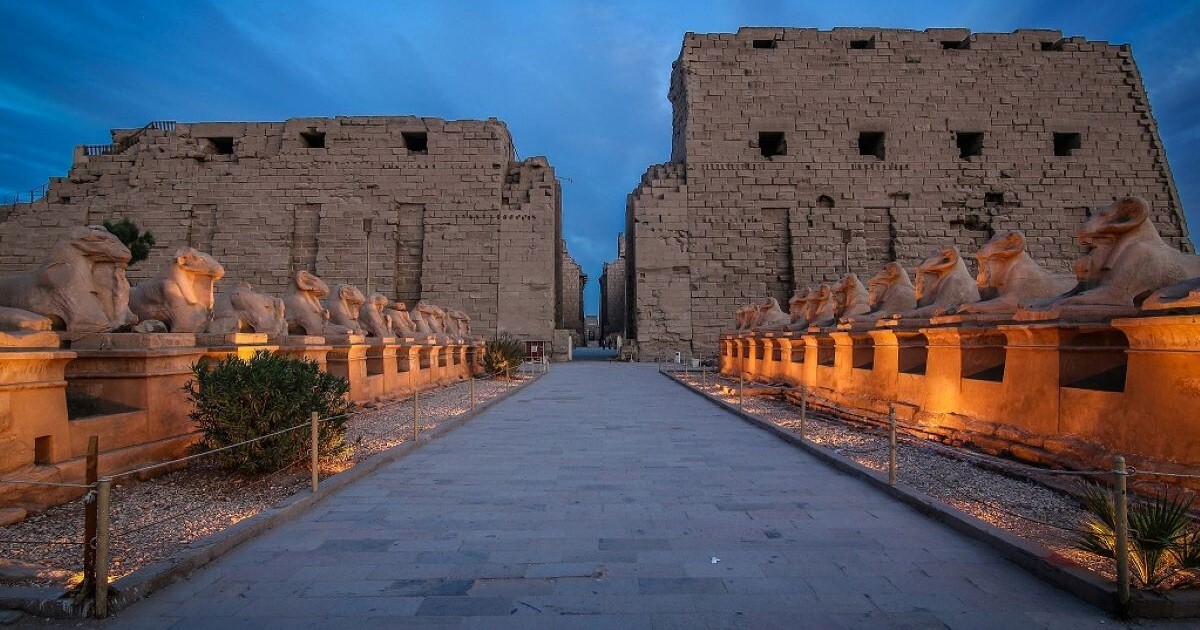
- On the eighth day, you will start your morning with a delightful breakfast at the hotel and check out.
- Next. we will escort you to Aswan Rail Station to take your first class trip to Luxor.
- After breafast, you will embark on a fascinating journey to explore the wonders of Luxor's East Bank. One of the highlights of your day will be visiting Karnak Temple. This magnificent structure served as the centre of religious worship for the ancient Egyptian civilization for over 1500 years. This awe-inspiring temple complex is dedicated to numerous deities, including the esteemed Theban triad: the powerful Amun, the righteous Mut, and the moon god Khonsu. With its rich history dating back over 4000 years, Karnak Temple provides a glimpse into ancient Egypt's spiritual and cultural heritage, making it a truly captivating experience for any visitor.
- Following your visit to the historical sites, you will savour a delightful lunch at an exceptional restaurant in Luxor. Afterwards, you will be transferred to your hotel for a chance to rejuvenate and refresh yourself.
Tour to Luxor Temple by Night

- Afterwards, you will have the incredible opportunity to explore Luxor Temple in all its illuminated glory. The temple reveals its ancient splendour, dating back to its construction in 1400 BCE during the reign of Pharaoh Amenhotep III. Originally known as "Ipetresyet," which translates to the southern sanctuary, Luxor Temple was dedicated to the mighty God Amun of the Theban triad, symbolizing the revival of kingship. Its captivating design features intricate decorations and remarkable architectural structures that will transport you to another time.
- Wrap up your day's adventures and return to your hotel for a night stay.
Tour to the Valley of the Kings
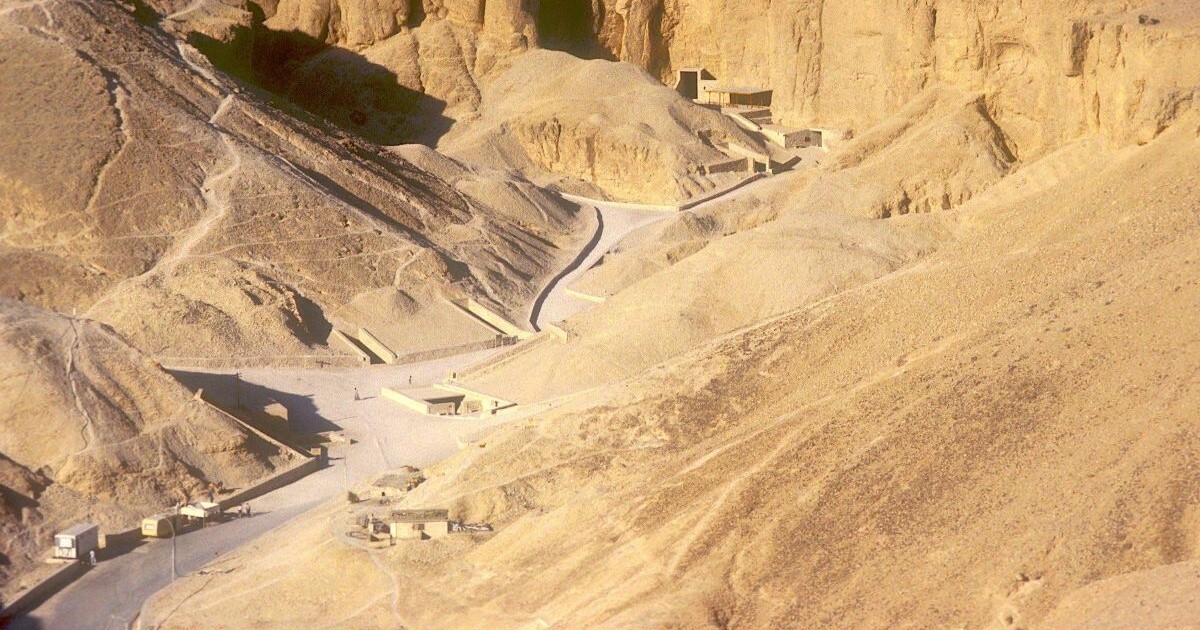
- On the seventh day of your journey, begin your day with a delicious breakfast. Embark on the next leg of your adventure in Luxor, immersing yourself in the captivating beauty of the city's remaining tourist attractions.
- Embark on an enlightening excursion with our knowledgeable Egyptologist tour guide as we explore the captivating wonders of Luxor. Your journey will commence with a visit to the breathtaking tourist attraction, the Valley of the Kings.
- In the heart of the Theban Necropolis lies the Valley of the Kings, a sprawling underground labyrinth housing 63 rock-cut tombs that served as the final resting places for esteemed nobles and kings of the New Kingdom (1570-1050 BC). These ancient tombs are adorned with awe-inspiring examples of Egyptian art, offering valuable insights into this enduring civilisation's historical, mythological, and religious beliefs.
Tour to the Mortuary Temple of Hatshepsut

- The Mortuary Temple of Hatshepsut, also known as the "Hatshepsut Temple," is a breathtaking and magnificent attraction that provides a stunning glimpse of outstanding beauty and grandeur. This temple is a testament to the remarkable reign of the revered queen, Hatshepsut (1473–1458 BC), and pays homage to the mighty god Amun. Carved into the sacred stone cliffs of the Deir El Bahari, this temple stands as a majestic symbol of ancient Egyptian architecture and religious devotion.
- Embrace the beauty of the west bank of the Nile River as you enjoy your lunch.
Tour to the Colossi of Memnon
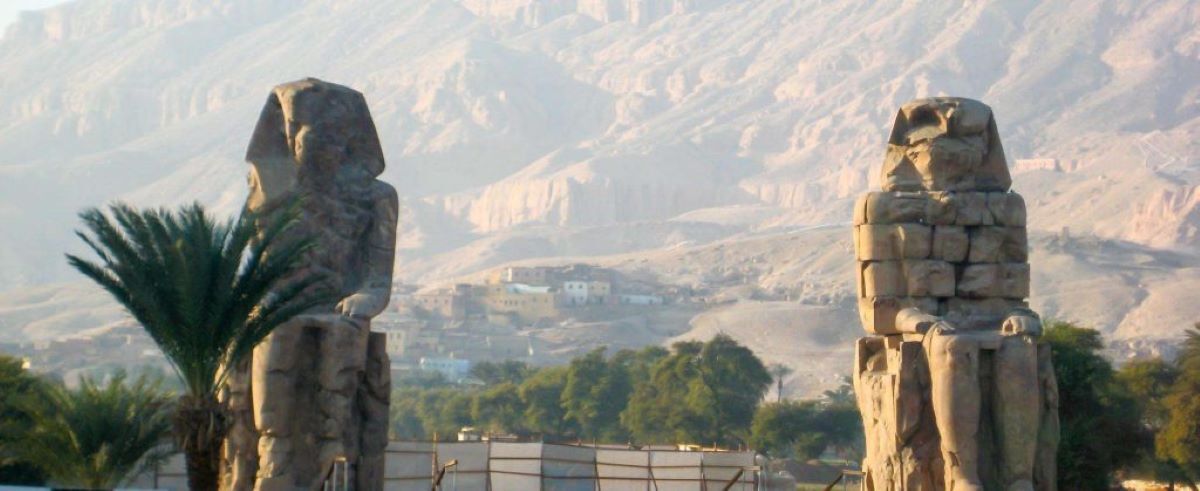
- The Colossi of Memnon, commissioned by Amenhotep III between 1386 and 1350 BC, were intended to serve as the imposing guardians of Luxor. These awe-inspiring twin statues, towering at 18 meters (60 feet) and weighing 720 tons each, are crafted in the likeness of the Pharaoh himself. Although they suffered damage from a severe earthquake in 27 BC, they were restored in 199 AD. The colossi gained widespread fame during the Greco-Roman period due to an intriguing phenomenon known as the "Vocal Memnon," where the statues would emit a melodic sound at dawn, believed to be caused by the wind passing through the stone.
- Enjoy a delicious lunch.
- Finally, we will escort you to your hotel in Luxor.
Tour to the Valley of the Queens

- The next day in Luxor starts with breakfast and heading next to the Western Luxor.
- The Valley of the Queens was the official burial chamber for the wives and children of the royal family. The archaeological site is located on the west bank of Luxor City, a few kilometres south of the Valley of the Kings.
- The site is composed of linked valleys full of 70 rock-cut tombs. Each tomb has long corridors that lead to the main burial chamber and smaller side chambers. There are some differences between the Valley of Kings and the one that belongs to the queens. The most fascinating tomb that will take your breath is the one that belongs to Queen Nefertari, the great wife of Ramesses the Second. The tomb has a unique design and capturing paintings that attracted many tourists worldwide since it was discovered in the 19th century by Ernesto Schiaparelli. The valley also composes other tombs for Queen Tyti, Prince Amen, and Khaem-west.
Tour to Medinet Habu
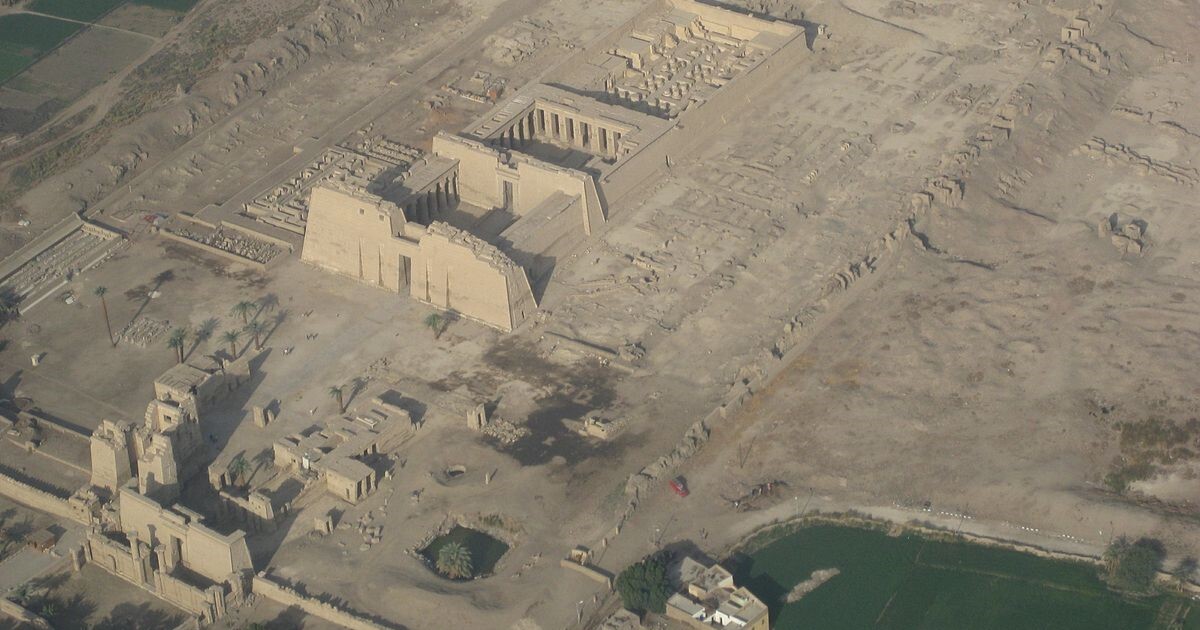
- Next, you will visit Medinet Habu. In ancient times, Madinat Habu was known as Djanet and according to ancient belief was the place where Amun first appeared. Both Hatshepsut and Tuthmosis III built a temple dedicated to Amun here and Later Rameses III constructed his larger memorial temple on the site.
Tour to Deir el-Medina
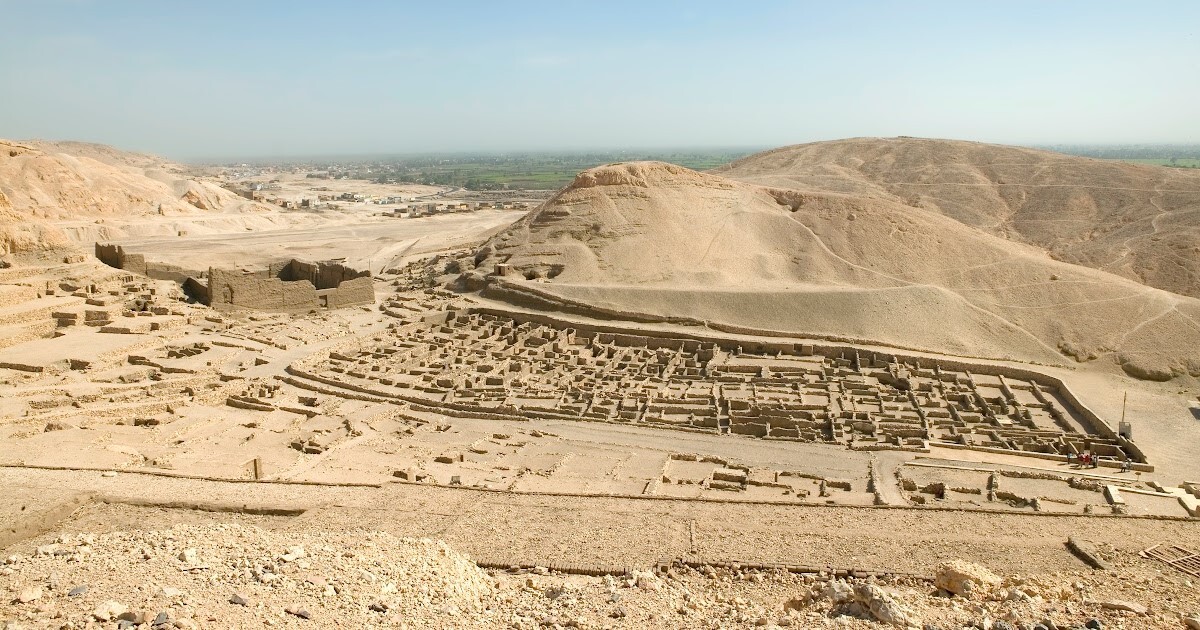
- Deir el-Medina is the modern Arabic name for the worker's village which was home to the artisans and craftsmen of Thebes who built and decorated the royal tombs in the nearby Valley of the Kings and Valley of the Queens.
- The earliest extant ruins at the site are from the reign of Thutmose I (1520-1492 BCE), son and successor of Amenhotep I, but there is no doubt that it was Amenhotep I who first planned the site. He and his mother, Ahmose-Nefertari, were worshipped as protective gods at the site throughout its history. The workers also venerated the cobra goddess Meretseger whose name means “She Who Loves Silence”, the personification of the Theban necropolis and protector of the dead and, especially, of their tombs.
- Enjoy a delicious lunch by Nile.
- After immersing yourself in the captivating historical sites of the Theban Necropolis, you will be escorted to your hotel in Luxor.
- After having breakfast, we will transfer you to Hurghada, where you will stay for the night. You will have the opportunity to relax and explore Hurghada's beautiful beaches and vibrant city life.
Desert Quad Biking Tour in Hurghada

- On the tewlfth day of your adventure, you will wake up in Hurghada by the beautiful Red Sea. After a hearty breakfast, prepare for an exhilarating Super Safari experience. You'll have the option to explore the stunning landscape either by riding a quad bike or a camel. Afterwards, relish a delicious B.B.Q dinner before returning to your hotel for an overnight stay in Hurghada.
- The thirteenth day will be free.
Snorkelling Trip in Hurghada
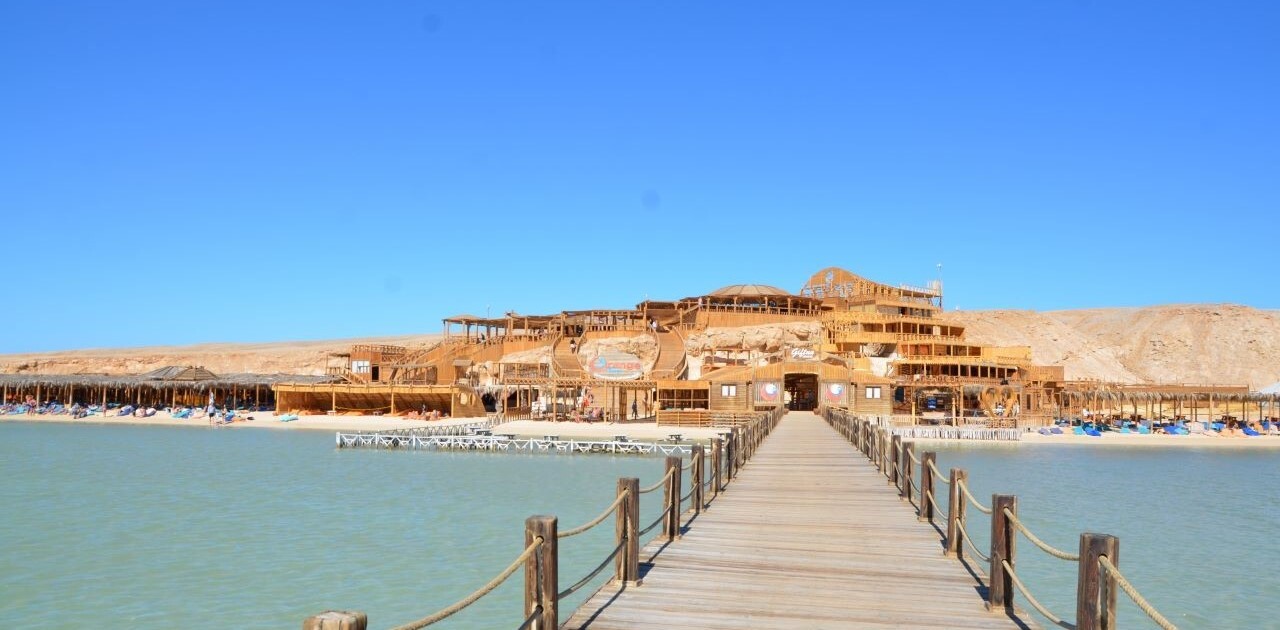
- On the forteenth day, you will have a snorkelling trip to enjoy the underwater life of the Red Sea.
- The sixteenth day will be free.
Tour to the Egyptian Museum
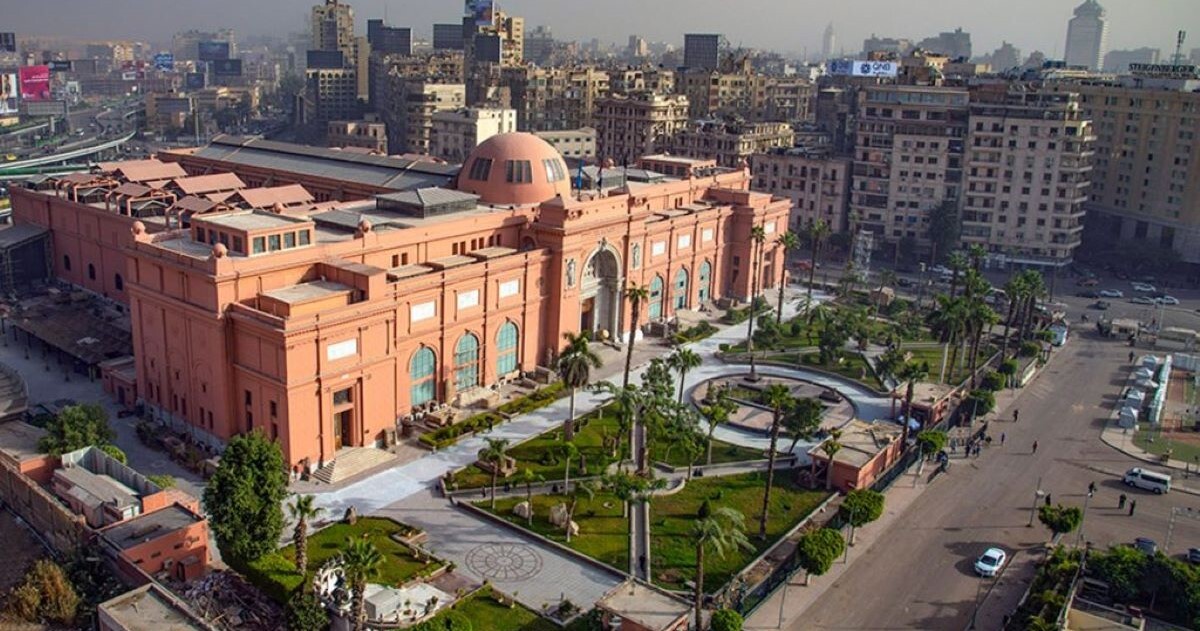
- The next day of your adventure, you will wake up early and go to Hurghada Airport to catch your flight to Cairo. In Cairo, you will embark on a captivating journey through its rich history, exploring awe-inspiring attractions and delving into the city's ancient wonders.
- After arrival, you will embark on an unforgettable journey to explore Cairo's ancient attractions. After indulging in a delicious breakfast, you'll delve into the heart of Cairo with your knowledgeable tour guide. Your adventure will commence with a visit to the renowned Egyptian Museum. This timeless treasure trove houses a remarkable collection of ancient artefacts that unveil the captivating history of Egypt. The museum, constructed in 1901AD, stands as a testament to Egypt's rich heritage, nestled in the bustling heart of Cairo.
- We will enjoy a delicious meal at a local restaurant in Cairo during our lunch break. Afterwards, we will continue our day with a visit to the Historic Cairo.
Tour to Citadel of Sultan Salah al-Din al-Ayyubi
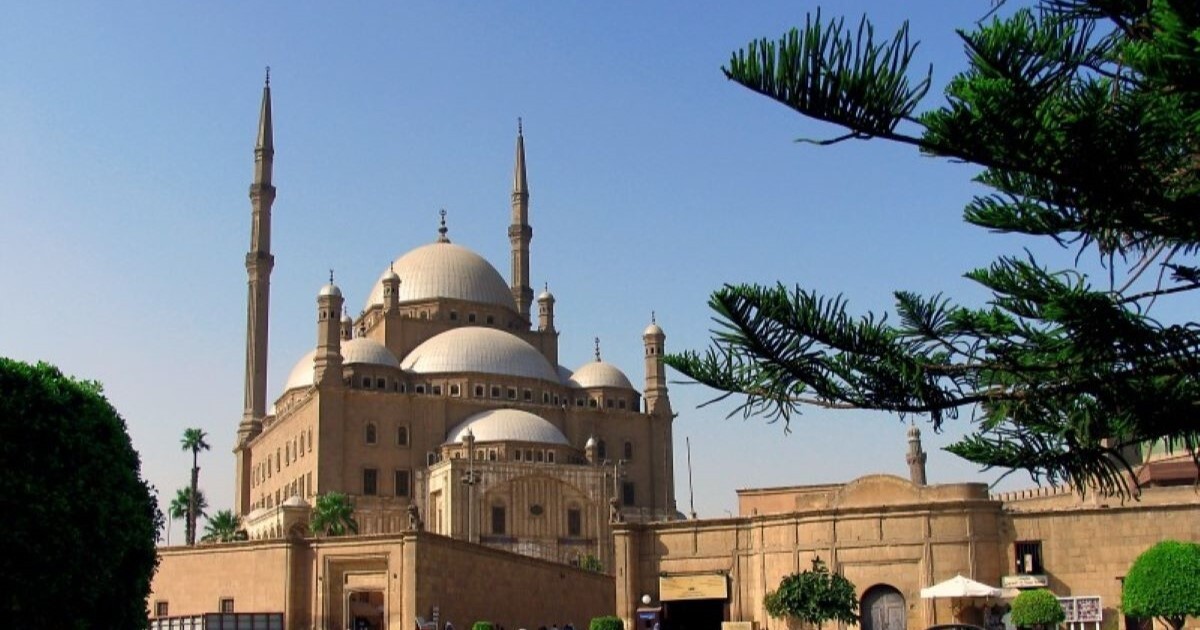
- The Citadel of Sultan Salah al-Din al-Ayyubi (Saladin) is one of the most iconic monuments in Islamic Cairo and among the most impressive defensive fortresses dating to the Middle Ages. Its strategic location on the Muqattam Hills gave it a formidable defensive position, and offered, as it still does today, an unrestricted panoramic view of Cairo.
- Sultan Salah al-Din al-Ayyubi was the first to order the construction of a fortress over the Muqattam Hills in (572 AH/ 1176 AD), but it was not completed during his lifetime. This was achieved during the reign of Sultan al-Kamel ibn al-Adel (604 AH/1207 AD) who decided to reside in it, making it the official residence of the rulers of Egypt. In the mid-nineteenth century, Khedive Ismail moved the official residence to Abdeen Palace in downtown Cairo.
- The Citadel witnessed some of the most significant events in Egyptian history from the time it was built to the end of the Muhammad Ali Dynasty, which was in power from the early nineteenth century until the 1952 revolution when the modern Egyptian republic was born. Many monuments were added to the Citadel over the centuries, providing visitors today with an array of places to visit, such as the Mosque of Muhammad Ali Pasha, which dominates the Citadel. Other places to visit include the mosque of the Mamluk sultan al-Nasir Muhammad ibn Qalawun, the Ottoman-era Sulayman Pasha al-Khadim Mosque, as well as several museums such as the Police Museum, Al-Jawhara Palace Museum, and the Military Museum.
- The Mosque of Muhammad Ali is located inside the Citadel of Salah al-Din al-Ayyubi (Saladin) in Cairo. It was built by Muhammad Ali Pasha in 1265 AH/1848 AD on the site of Mamluk palaces. This mosque is known as the "Alabaster Mosque", because of the marble panelling on its interior and exterior walls. The mosque’s twin minarets are the highest in all of Egypt, each reaching a height of 84 meters.
- The mosque was built in the Turkish style and consists of an open court and prayer hall. The prayer hall is a square space that is surmounted by a large central dome surrounded by four semi-domes and four shallow domes in the corners. There are two minibars (pulpits) inside the mosque. The original of the two is made of wood decorated in green. The other was a later addition made of marble.
- The outer open court contains a copper clock tower, which was gifted to Muhammad Ali Pasha by Louis Philippe of France in 1262 AH/1845 AD. Muhammad Ali Pasha reciprocated the gesture with an obelisk of Ramesses II’s (c.1279–1213 BC) that stood in front of Luxor Temple. Today, it stands in the Place de la Concorde Square, Paris.
- Limestone is the mosque’s main building material. Its square plan consists of a central dome supported by four halves.
Tour to the National Museum of Egyptian Civilization
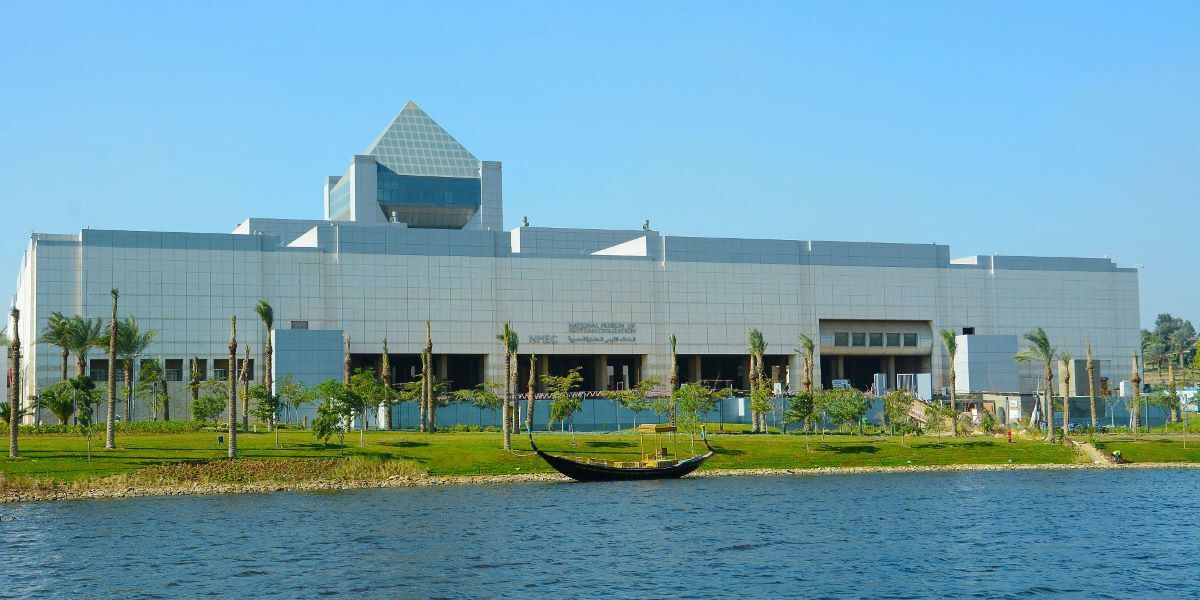
- Discover the awe-inspiring National Museum of Egyptian Civilization (NMEC) in the historic Fustat area of old Cairo. This magnificent institution unveils a mesmerising journey through 50000 exquisite art pieces spanning 4000 years of Egypt's wealthy culture and history. Brace yourself for an enthralling encounter with regal mummies and an exceptional collection of masterpieces adorning every nook and cranny of this enchanting museum.
Tour to Ben Ezra Synagogue
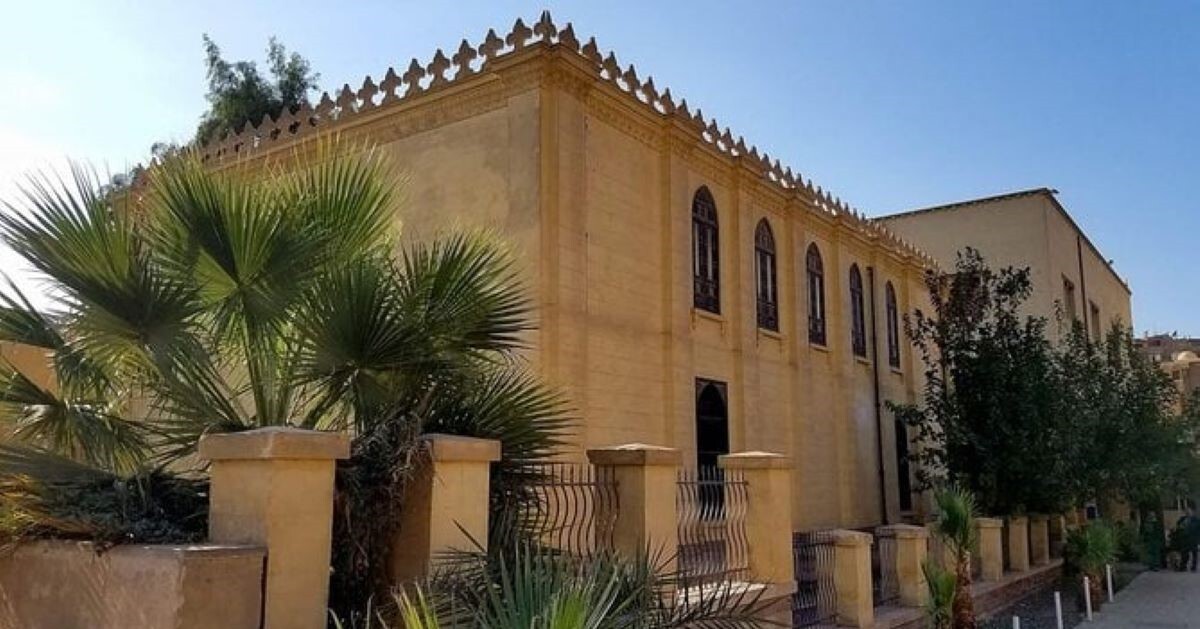
- Ben Ezra Synagogue is the oldest synagogue in Egypt. It was once the centre of many celebrations, congregations and prayers, but is no longer in use today. The synagogue is named after Abraham ibn Ezra, the Jewish religious scholar and philosopher.
- Ben Ezra contains all the main features of a synagogue. The bimah, or pulpit, from which prayers were read is in its centre. The most sacred feature of a synagogue, the hekhal, which marks the direction of prayer, is decorated in Arabesque style and inlaid with mother of pearl, displaying a merge of artistic traditions. The Ten Commandments are inscribed on it in Hebrew.
Tour to Al-Muizz Street
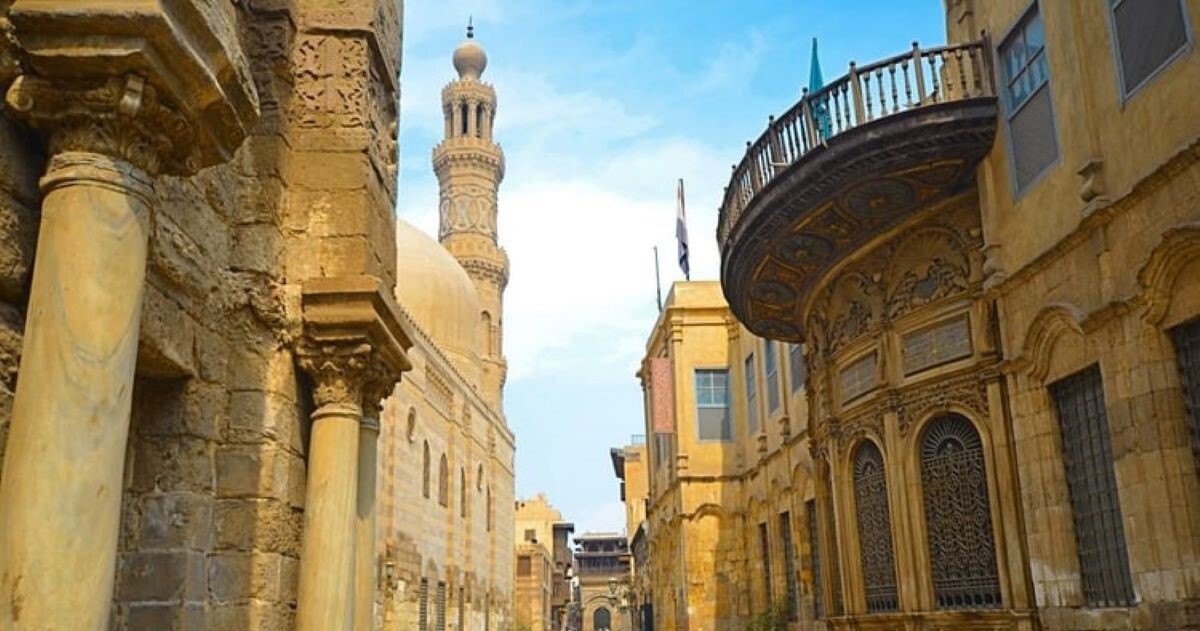
- Al-Muizz Street, also known as "Al Muizz Li-Din Allah al-Fatimi Street," is a mesmerising historical thoroughfare that has withstood the test of time, offering a captivating glimpse into ancient Islamic history. This enchanting street is situated at the heart of old Cairo and was initially constructed in the 10th century by the Fatimid dynasty. Over the centuries, it has evolved into a vibrant hub of social activity and cultural significance, drawing locals and visitors alike to marvel at its architectural wonders and immerse themselves in its rich heritage. Adjacent to this illustrious street lies the renowned Khan El Khalili Bazaar, a bustling marketplace rightfully recognised and added to the World Heritage list in 1979.
Tour to Khan El Khalili Bazaar
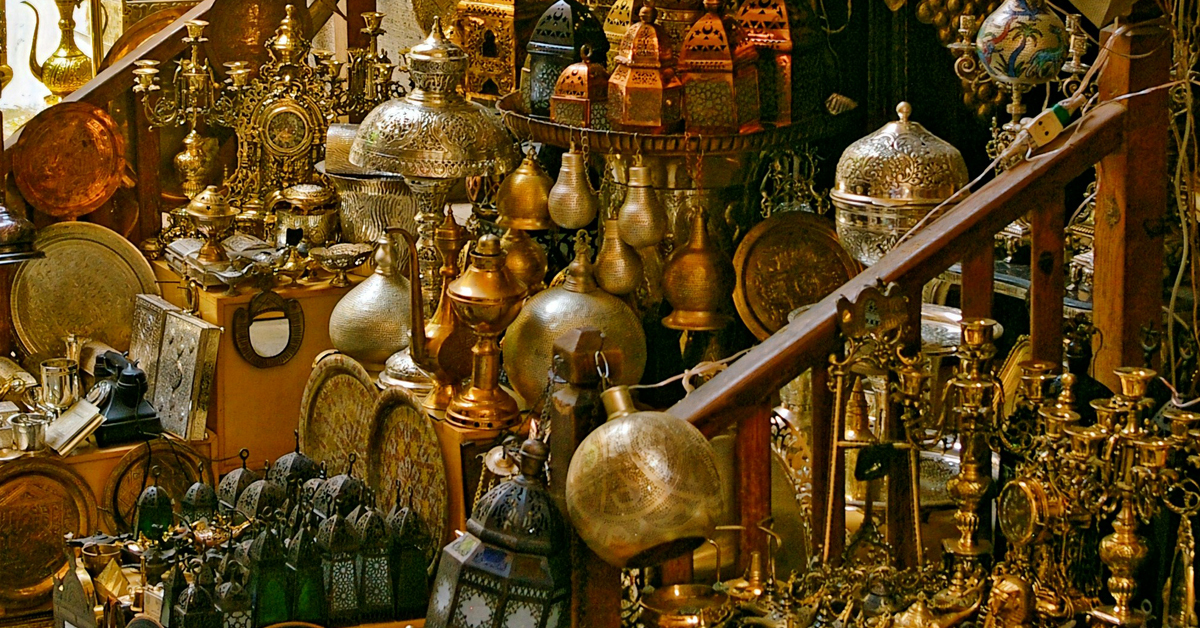
- Khan El Khalili Bazaar is often called the "golden brick road of the Middle East" due to its rich historical significance. Dating back to 970 AD, it holds the distinction of being the oldest market in the region. The bustling street continues to thrive, offering travellers an enchanting array of goods and treasures. Its magical cafés and time-honoured shops, some of which have existed for centuries, are a testament to the enduring charm of the market. The street is adorned with Islamic architectural marvels and intricate decorations that have stood the test of time, exuding an irresistible allure for visitors.
Tour to Saint Catherine Monastery
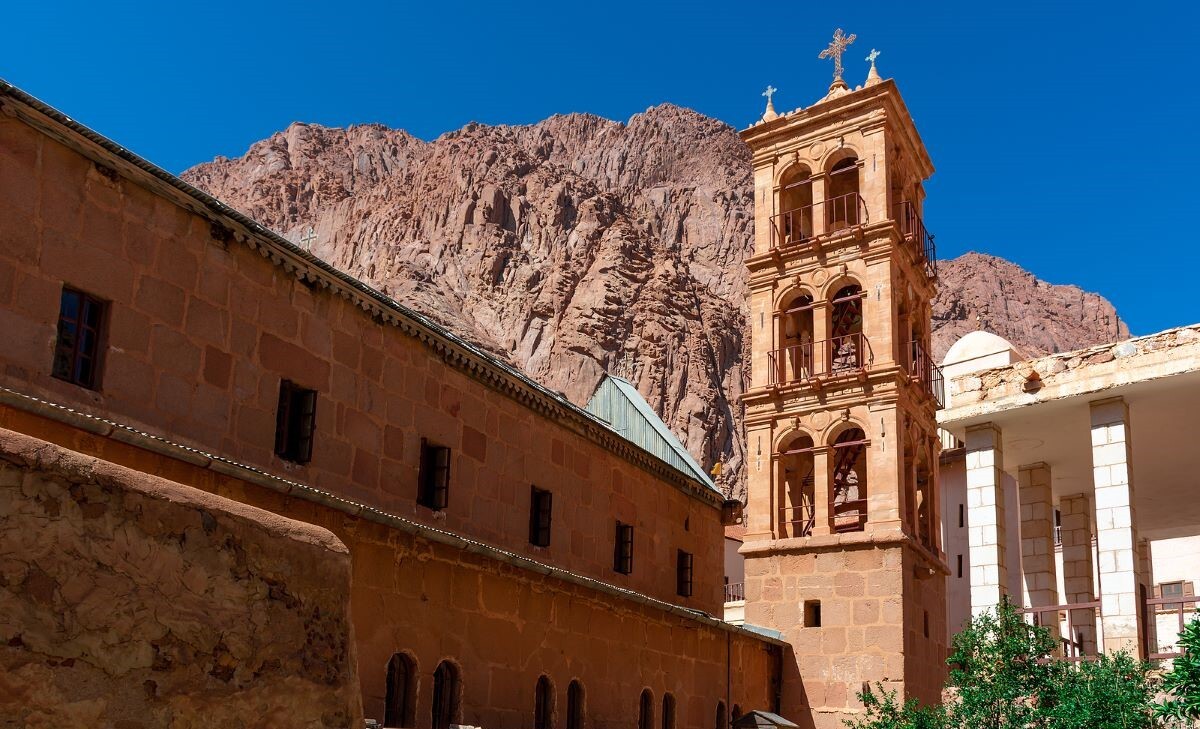
- After the day, we will arrange your transfer to the hotel where you will stay for night.
- We will pick you up from your hotel in Cairo and drive you for around 6 hours by a private air-conditioned vehicle to St Catherine and upon arrival, you will check in a hotel to relax and spend the night.
- By 02:00 am in the very early morning, you will be heading to the Sinai Mountain.
- Mount Sinai, also known as Jebel Musa or Mount Horeb, is a prominent golden mountain in the southern part of the Sinai Peninsula. It is a significant religious site for multiple faiths, including Christianity, Judaism, and Islam. According to the Bible, it is believed to be the mountain where Moses received the Ten Commandments from God. It has an elevation of 2,285 m (7,497 ft) and a prominence of 334 m (1,096 ft). Many pilgrims and tourists embark on a challenging hike up the mountain to witness the breathtaking sunrise or sunset from its summit. The climb typically starts from Saint Catherine's Monastery and takes several hours, depending on the route chosen.
- Saint Catherine's Monastery, also known as the Sacred Autonomous Royal Monastery of Saint Katherine of the Holy and God-Trodden Mount Sinai or Monastery of the Transfiguration, is an ancient Christian monastery situated at the foot of Mount Sinai. It is considered one of the oldest continuously inhabited Christian monasteries on earth. It was established in the 6th century and is named after St. Catherine of Alexandria, a Christian martyr. It is a UNESCO World Heritage Site and houses a vast collection of religious art, manuscripts, and icons. The monastery is revered as a site of pilgrimage for Christians and attracts visitors from around the world.
- You will get back to your hotel to have breakfast.
- Finally, we will escort you back to your hotel in Cairo.
- On the tenth and final day of your Cairo, Faiyum, Luxor, Aswan, Hurghada 19-day Tour Package, you'll enjoy a leisurely breakfast before being escorted to the airport by our dedicated representative. As you prepare to depart, take a moment to reflect on your unforgettable experiences and cherished memories before returning home.






